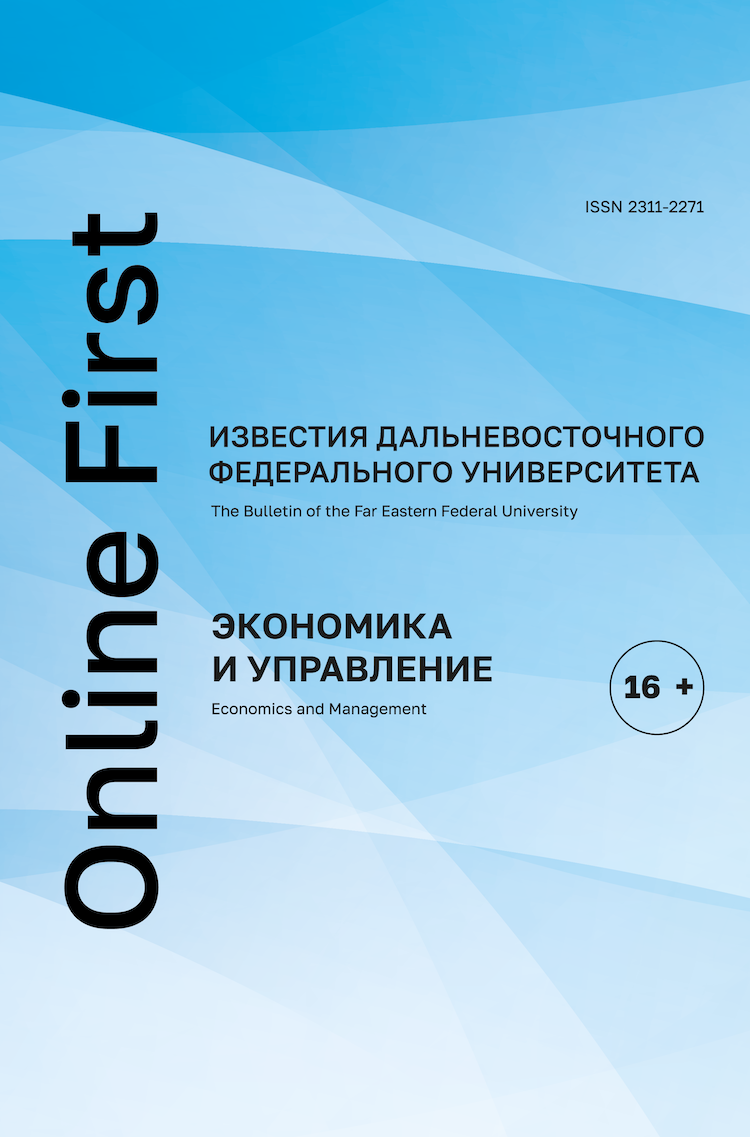Cтруктурный аспект классической модели принятия коллективных управленческих решений
Аннотация
В рамках классической модели принятия коллективных управленческих решений – модели мусорной корзины (gar-bage can model) – исследуется структурный аспект процес-са принятия решений. Для выявленных пограничных струк-тур системы принятия решений проводится сравнитель-ный анализ эффективности, понимаемой как доля решенных системой проблем от общего числа проблем, поступивших в систему. Установлено максимальное количество проблем, которые могут быть решены в различных вариантах орга-низационной структуры, получено вероятностное распре-деление исходов, установлено соответствие уровня слож-ности проблем типам организационной структуры, при которых система принятия решения работает наиболее эффективно. Представлены обобщение и итог ранее прове-денных исследований.
Ключевые слова
Полный текст:
PDFЛитература
Barnard C.I. The Functions of the Executive. Cambrige (MA), Harvard Universi-ty Press, 1938.
Simon H.A. Rational choice and the structure of the environmen. Psychological Review, 1956, no. 63, pp. 129–138.
Simon. H.A. Rationality as Process and as Product of Thought. Richard T. Ely Lecture. American Economic Review, 1978, vol. 68, no. 2, pp. 1–16.
Simon H.A. A behavioral model of rational choice. Quarterly Journal of Eco-nomics. s, Vol. 69, No. 1. (Feb., 1955), pp. 99–118.
March J.G., Simon H. Organizations. New York, John Wiley & Sons, 1958. 262 p.
March J. Bounded Rationality, Ambiguity, and the Engineering of Choice. The Bell Journal of Economics, 1978, 9(2), pp. 587–608. Selznick P. Leadership in Administration. Evanston, IL: Row, Peterson, 1957
Selznick P. Leadership in Administration. Evanston, IL: Row, Peterson, 1957, pp. 91–100.
Mintzberg H., Raisinghani D., Theoret A. The structure of «unstructured» deci-sion processes. Administrative Science Quarterly. 1976, no. 21, pp. 246–275.
Cohen, Michael, James March, and Johan Olsen.. A Garbage Can Model of Organ-izational Choice. Administrative Science Quarterly, 1972, 17 (March), pp. 1–25.
The Garbage Can Model of Organizational Choice Looking Forward at Forty, Series: Research in the Sociology of Organizations v. 36 Contributor(s): Richard Harrison (editor), Alessandro Lomi (editor), Michael Lounsbury (series editor), Emerald Group Publishing Limited, 2012. 438 p.
March J.G., Olsen J.P.. The New Institutionalism: Organizational Factors in Po-litical Life. American Political Science Review, 1984, vol. 73 (September), pp. 734–749.
March J.G., Olsen J.P. Rediscovering Institutions. The Organizational Basis of Politics. New York, The Free Press, 1989. 245 p.
March J., Olsen J. Garbage Can Models of Decision Making in Organizational. J. March & R. Weissinger-Baylon, eds. Ambiguity and command: Organizational perspectives an military decision making. Marshfield: Pitman, 1986, pp. 11–35.
Bendor J., Moe T. M. & Shotts K. W. Recycling the Garbage Can: An Assess-ment of the Research Program. The American Political Science Review, 2001, 95(1), pp. 169–190.
Olsen J.P. Garbage cans, new institutionalism, and the study of politics. American Political Science Review, 2001, no. 95(1), pp. 191–198.
Смаржевский И.А. Анализ модели принятия решений в организации. Фи-нансовая аналитика: проблемы и решения, 2013, № 30(168), сс. 9–18. [Smarzhevskiy I.A. Analiz modeli prinyatiya resheniy v organizatsii[Analysis model of decision making in the organization]. Finansovaya analitika: problemy i resheniya, 2013, no. 30 (168), pp. 9–18.]
Смаржевский И.А. Влияние организационной структуры на эффективность принятия коллективных управленческих решений. Финансовая аналитика:
И.А. Смаржевский // Известия ДВФУ. Экономика и управление. 3. 2017. 34–43
проблемы и решения, 2015, № 15 (249), сс. 42–54. [Smarzhevskiy I.A. Vliyanie organizatsionnoy struktury na effektivnost' prinyatiya kollektivnykh up-ravlencheskikh resheniy [The organizational structure influence on the efficiency of collective decision-making]. Finansovaya analitika: problemy i resheniya, 2015, no.15 (249), pp. 42–54.]
Mandell M. The Consequences of Improving Dissemination in Garbage-Can De-cision Processes. Insights from a Simulation Model. Knowledge: Creation, Diffu-sion, Utilization, 1988, vol. 9, pp. 343–361.
Lai S.. Effects of Planning on the Garbage-Can Decision Processes: A Reformu-lation and Extension. Environment and Planning B: Planning and Design., 2003, vol. 30, pp. 379–389.
Inamizu N. Inside the garbage can: An orderly decision-making process in disor-derly organisation structure. Manufacturing Management Reseach Center, Uni-versity of Tokyo, June 2009, Discussion papers series, no. 264, http://merc.e.u-tokyo.ac.jp/mmrc/e_index.html
Inamizu N. Garbage can paradox: A disorderly decision-making process in or-derly organisation structure. Manufacturing Management Reseach Center, Uni-versity of Tokyo, June 2009, Discussion papers series, no. 265, http://merc.e.u-tokyo.ac.jp/mmrc/e_index.html
Thorbjørn K., Massimo W., Sangyoon Y. Garbage Can in the Lab. J. R. H. Ales-sandro Lomi, ed. The Garbage Can Model of Organizational Choice: Looking Forward at Forty (Research in the Sociology of Organizations,). Emerald Group Publishing Limited, 2012, vol. 36, pp. 189–227.
Fioretti G., Lomi A. An Agent-Based Representation of the Garbage Can Model of Organizational Choice. Journal of Artificial Societies and Social Simulation, 2008. 11(11). ,
Fioretti G., Lomi A.. Passing the Buck in the Garbage Can Model of Organiza-tional Choice. G. Fioretti and A. Lomi: Passing the Buck in Computational and Mathematical Organization Theory. 2010 Issue 16 (2), pp. 113–143.
Daft R. Organization Theory and Design. 8 ed. s.l.:South-Western College Pub., 2003. 688 p.
Das T.K., Teng B.S.. Cognitive biases and strategic decision processes: An inte-grative perspective. Journal of Management Studies, 1999, 36(6), pp. 757–778
Eisenhardt K., Zbaracki M. Strategic decision-making. Strategic Management Journal, 1992, vol. 13, pp. 17–37.
Grandori A. A prescriptive contingency view of organizational decision-making. Administrative Science Quarterly, 1984, № 29(2), pp. 192–209.
Kingdon J.W. Agendas, alternatives, and public policies. Boston, Little, Brown & Co., 1984. 240 p.
Levitt B., Nass C. The lid on the Garbage Can: Institutional constraints on deci-sion making in the technical core of colledge-text publishers. Administrative Science Quarterly, 1989, 34(2), pp. 190–207.
Смаржевский И.А. Анализ модели принятия коллективных управленческих решений. Финансовая аналитика: проблемы и решения, 2014, № 45 (231), сс. 46–57 [Smarzhevskiy I.A. Analiz modeli prinyatiya kollektivnykh uprav-lencheskikh resheniy [Analysis model of collective decision making]. Finan-sovaya analitika: problemy i resheniya, 2014, no. 45 (231), pp. 46–57.]
Smarzhevskiy I.A. Small Addition to the 'Garbage Can Model: Reconstruction and Logical Analysis'. Avaylable at: http://papers.ssrn.com/sol3/papers.cfm?-abstract_id=2519433
(c) 2018 Научный журнал "Известия Дальневосточного федерального университета. Экономика и управление"
© Дальневосточный федеральный университет, 1996-2022.
© Научный журнал "Известия Дальневосточного федерального университета Экономика и управление" - 16+.
Свидетельство о регистрации средства массовой информации ПИ № ФС77-57575
Издатель - ФГАОУ ВО "Дальневосточный федеральный университет".
При перепечатке ссылка на Сайт Журнала обязательна.
Коммерческое использование размещенных материалов запрещено.
E-mail: sem-journal@dvfu.ru





